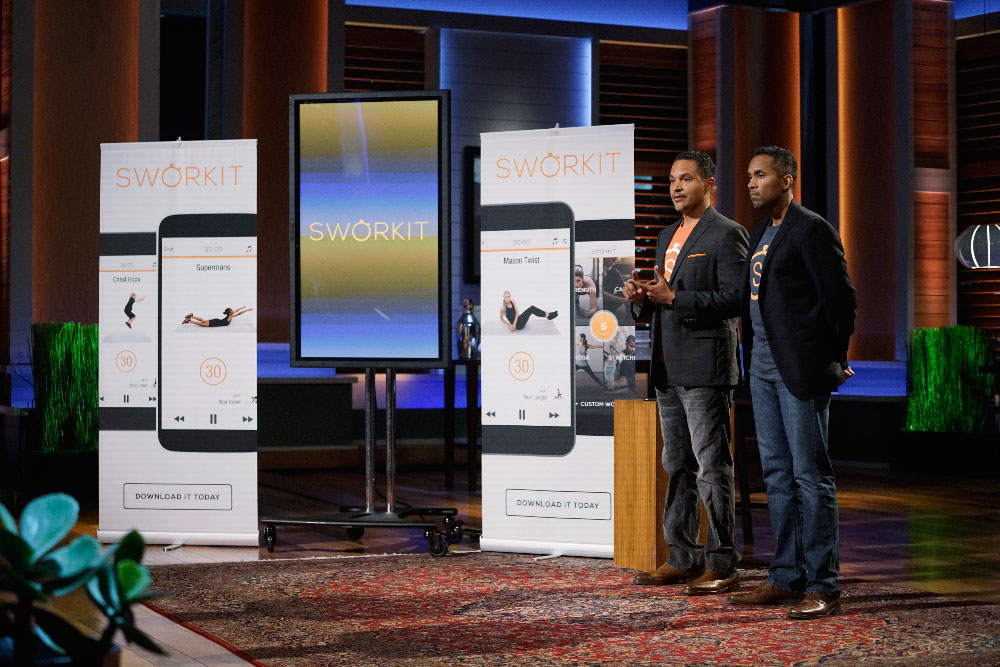University of Virginia alumni are causing a frenzy on ABC’s “Shark Tank.” In an episode of the investment-pitching competition series that aired on Feb. 18, alumnus Ben Young earned the biggest tech deal in the show’s history for his fitness app, Sworkit.
The 1998 graduate’s success comes just three months after alumna Desirée Davis Stolar struck a deal with the very same “shark.” It seems that investor Mark Cuban is a fan of Wahoo ingenuity.
On the show, budding entrepreneurs compete to earn investment dollars from five “sharks.” Each “shark” is a wealthy and well-known business tycoon like Cuban.
He agreed to give Young and his co-founders $1.5 million in exchange for a 10 percent equity stake in Sworkit and up to $1.5 million in unsold ad space inside the app. Like the app’s millions of early adopters, Cuban was drawn to Sworkit’s personalized, easy-to-use style.
“In essence, we’ve created a video workout player that’s built on the same principles as a music player and people understand that,” Young said.
Young founded Sworkit’s parent company, Nexercise, with fellow University of Pennsylvania Wharton School graduate Gregory Coleman while the two were completing their MBAs. However, Young’s desire to experiment with exercise and the digital space began more than a decade earlier while he was an undergraduate in UVA’s School of Engineering and Applied Sciences.
“Growing up I was always interested in building things and I thought I wanted to do more physical stuff,” he said. “Then I took a computer class at the Engineering School and just fell in love with computer programming. That was the start of the fundamentals for me.”
Young began exercising more often because one of his Kappa Alpha Psi fraternity brothers taught him about planning regular routines and targeting different areas of the body.
After graduation, a series of desk jobs made him more sedentary and offered less time for trips to the gym, so Young started thinking about how he could use computer programming to motivate himself and others to exercise more regularly.
“I’d always been interested in the health space, and that was back when mobile technology was in its infancy,” he said. “Phones were getting sensors in them that I thought had great potential and I was always interested in seeing if I could use technology to motivate fitness.”
Soon, Nexercise and Sworkit were born.
Sworkit, derived from “simply work it,” allows users to build their own customized workouts of varying lengths. Similar to popular music players like Spotify, users can choose specific genres they’re interested in and even select specific workouts to create “playlists.” Rather than music, these playlists are made up of instructional videos focused on strength, yoga, Pilates or stretching.
No workout equipment is necessary to use Sworkit and every video in its growing list of options is created in-house under the supervision of the company’s certified personal trainers.
Sworkit’s approach has garnered the app more than 14 million downloads since it was released in 2014, but Young said that it was a long road to that level of success. He and Coleman went through a process of trial and error in app design.
“Sworkit was not our first idea,” said Young.
They had moderate success experimenting with new apps that used prizes to incentivize people to exercise, but knew they were really on to something when they began collaborating with engineer Ryan Hanna.
“When we met Ryan, who is now our VP of engineering, he had already created a prototype of Sworkit,” said Young. “The original was very simple and mainly just provided randomized workouts.”
With Ryan on board, the three began rebuilding Sworkit for a re-launch using what they’d learned from their earlier experimentation.
“The way we rebuilt it was so modular and flexible,” Young said. “A lot of other workout apps and programs are really repetitive, but ours are literally individual optimized workouts that are strung together into a workout.”
The app is set up in a way that users can either flag favorite routines or never do the same thing twice. They can also set the exact amount of time they’d like to work out, anywhere from five minutes to over an hour.
“Instead of just watching a video, you’re having an interactive experience,” Young said.
Sworkit has more than 200 original videos and is available in 12 languages. It’s offered as a free download as well as an expanded subscription version for either $2.99 a month or $19.99 per year. Now, with their new investment from “Shark Tank,” the partners plan to continuing growing their platform even further.
Paying subscribers will have first access to a beta Web version of the app that the company is rolling out this month, and Young hopes they will soon be reaching platforms like Apple TV and Google Chromecast.
Other plans in the works include a youth version and a larger subscription service that includes access to fitness equipment.
Looking back on his current success, Young says his only regret is that he didn’t start working for himself sooner. He advises up-and-coming UVA entrepreneurs to begin testing their ideas as soon as possible and not to be afraid to try to launch them on their own.
“It is now cheaper than ever to build something in the digital space,” he said. “It’s expensive to scale it, but it’s cheap to build and test it. I was always building things, but I was always building them for other people. My advice is to spend your spare time building for yourself instead. There is an inherent advantage to being young and just trying something out.”
Media Contact
Article Information
March 1, 2016
/content/second-uva-alumnus-shark-tank-earns-record-setting-investment

